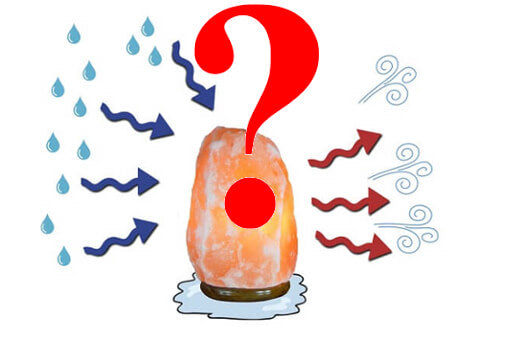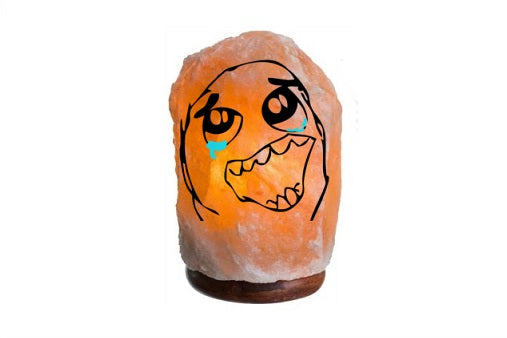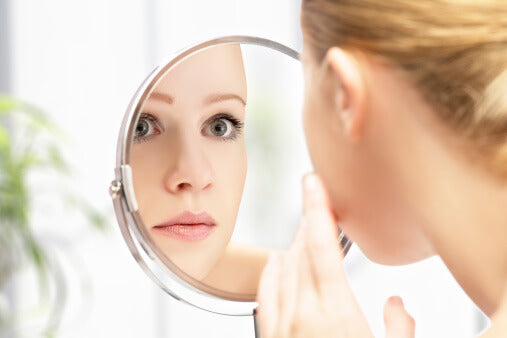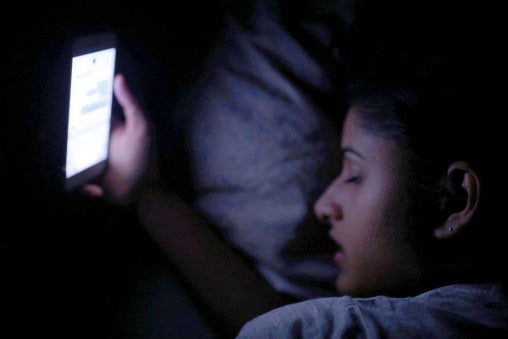
It’s no secret that salt lamps provide a great many valuable health benefits - especially to those with sleeping and respiratory problems. Having a lamp in a room gives off a soft and warm vibe, instantly creating a feeling of relaxation.
However… salt lamps don’t come without a few hazards. While the benefits do outweigh the risks of salt lamps, it still pays to know what these off-chance dangers are. So what are the dangers of Himalayan salt lamps?
Are Salt Lamps Dangerous?
The short answer is No… Even though there was a recall recently in the United States, it was because the company used unsafe electrical components to save cost.
For the most part they are perfectly safe however this article is intentionally going to look at the worst case scenarios so don't be off put by the doom and gloom tone, but do have fun reading as we spell out what could potentially make a salt lamp 'dangerous'.
How you plan on using the salt lamp determines what these hazards are, but for the most part, a salt lamp hazard isn’t usually of the fatal kind. (Unless one of your pets lick the salt off!) Salt lamps are NOT toxic by nature in any way whatsoever.
Himalayan Salt Lamps May Corrode
Many people ask of salt lamps are safe to leave on? The answer is, it's not only safe but recommended, especially if you want to prevent corrosion. If you never turn them on they may corrode your furniture.
Don’t be surprised to see puddles of water on surfaces where you place your salt lamp. Salt is both corrosive and hygroscopic – it absorbs water – in humid areas, this water can drip down onto the surface where the salt lamp is placed and if that surface is metal, there is a risk of it being corroded away because of the chemical interaction of the salt water and the metal.
If your lamp has a wooden base and your lamp frequently sweats like this, then your wooden base also stands at risk of being corroded. So make sure the salt lamp is placed on place-mats and kept dry, especially if its kept in humid environments like the basement, bathroom, or kitchen.
Salt Lamps Aren’t Durable
Our lamps are built to last and very durable, but most salt lamps aren't as durable. You can read more about it on Our Lamps page. Be extra careful when you’re handling Himalayan salt lamps, as salt is brittle and breaks easily.
White Himalayan salt, to be specific, is the most fragile type of salt lamp, and that's why it can cost more, because sourcing and carving it is a harder task.
Beware of Tipsy Heavy Salt Lamps
Salt lamps also weigh more than the average desk lamp and can be dangerous to handle. They are noticeably asymmetric, too, because they are hand-hewn.
If your salt lamp has a poorly carved base (too small, uneven, not properly attached etc), or if it’s a little topside heavy, the salt lamp might fall if pushed slightly.
It’s recommended to check if the lamp is firmly connected to its base as low quality lamps can be haphazardly assembled and not properly attached to the base.
Our lamps are carefully crafted with all this in mind, the bases are very safe and well built, you can read more about it and compare it with other bases on Our Lamps page.
One way to check the authenticity and quality of your salt lamp is to check if it follows Aussie safety standards (SAA stamped) and is originated from Pakistan. But usually you can't tell even from just that information.
The truth is that MANY factors go into how safe and quality your lamp is and most lamps are made without due care. We've spent years in refining and mastering our craftsmanship and lamp creation process so that you get the best of the best.
Hazards For Animals - Take Care with Pets
To be specific, salt lamps are dangerous to cats, since it can cause salt poisoning. Cats are curious little creatures and might lick off the salt.
While salt per se isn’t deadly for them, they can only take up to 16.7 mg of salt daily. If it ingests more than the allowed daily, the cat may vomit, accumulate too much fluid, have seizures and diarrhoea or even fall into a coma. This is in the worst case scenario of course and thousands of salt lamp owners have pet's with no issues as such.
If you're worried, an easy solution to prevent this potential danger is to place the salt lamp in a location inaccessible to your pets. Or discipline your cat not to lick it when you see it trying to.
Dangers For Young Children
If the salt lamp is placed at a height accessible by babies and young children, it can pose a danger to them. They probably won’t lick it… but you really never know what young children get up to when your back is turned… For one, too much salt can lead to gastric problems and (in rare cases) even seizures among infants and children.
They can also be a falling hazard due to their weight and you don't want a heavy lamp falling on anyone - so be sure to keep the lamp in a safe place.
Electrical Hazards
The dangers of using salt lamps may also include electrical dangers and fire risk. Of late, 80,000 Himalayan salt lamps have been recalled by the Consumer Product Safety Commission due to overheating for a particular brand of salt lamps in the United States (which cut on costs and compromised the lamp quality).
Always buy quality and safety approved lamps like the ones we sell here, it’s better for long term usage.
So you might be wondering: Can a salt lamp catch fire?
Electrical dangers and fire are related and causal in nature. These happen when salt lamps have substandard lamp holders, i.e. the lamp holder is loosely installed at the base of the Himalayan salt crystal.
If the salt melts on an exposed lamp holder, this could not only cause damage to the cord and lamp holder but can also make it spark, with the risk of fire. Though this risk is quiet low, even with the cheapest chinese made lamps. If you're worried about your lamp we recommend you don't place it on a carpet (which could be flammable)
All 240V salt lamp holders for that matter, should pass an IP64 test to ensure water doesn’t enter them as the salt melts off. Our lamps have been tested to this standard and approved to Australian consumer standards.
Feng Shui
The next “risk” isn’t really something to be worried about, unless you are a believer of feng shui.
For esoterics, salt is a great cleansing agent, which removes any bad vibes or negative energy in a room. However, feng shui practitioners have misgivings on salt lamps as they do not possess salt’s cleansing power.
They even claim that salt lamps soak up positive energy, which explains why people feel “tired” after staying in a room with a salt lamp turned on (as opposed to being “relaxed” and “sleepy”).
Feng shui practitioners also believe that Himalayan salt lamps are drying, which can cause you to feel despondent and lethargic.
We have not had such reports from our lamp owners. We have however have had several lamp owners suggest that using the lamps has attracted "spirits" to their homes. Some consider this a positive thing, however such claims aren't verifiable and we think, not something serious to worry about!
Common Misunderstanding & Myths
Though these aren't exactly dangers, there are a lot of ‘dangerous’ misconceptions surrounding salt lamps that you should be aware of.
Lowering Blood Pressure
Pink Himalayan salt may be good for your overall health, but it doesn’t substitute any of your medications, especially if these are for blood pressure. There is no scientific study that proves Himalayan salt can lower blood pressure. In fact, salt can causes your blood pressure to rise.
Bone Strengthening Ability
No scientific literature has also been able to prove that Himalayan salt can strengthen your bones. If ever you come across blogs that claim such benefit of Himalayan salt, know that it’s just a myth!
Acid Reflux & Blood Circulation
In a similar vein, Himalayan sea salt was not found to be an effective cure for acid reflux, or a treatment to improve blood circulation. Although this pink sea salt has its share of positive effects on your health, the more outlandish claims should only be taken with a grain of salt. (Figuratively speaking!)
Tips & Precautions in Using Salt Lamps
To prevent fires, electrical damages, and other related salt lamp hazards, avoid tampering with your salt lamp and/or the switch, even when the bulb flickers.
Simply turn it off and take it to the manufacturer or the nearest repair center. Use only SAA certified replacement cords, too.
More important, get a real and high quality salt lamp. Be wary of imitations in the market as they’re far more likely to cause any of the hazards mentioned above.
In Australia, for instance, the “Safe Salt Lamp” brand and logo is mandated to appear in such items to reassure consumers that the manufacturers have complied to Australian safety standards.
Meanwhile, the electrical cables must comply with the safety policies of the Australian Communications and Media Authority (ACMA) and Energy Safe Victoria.
Salt lamps must likewise bear a SAA stamp of approval as proof that they won’t cause fire and electrical hazards.
The Final Say - Dangerous or Not?
Salt lamp dangers can be avoided by simply avoiding products with manufacture and design defects. Even if a lamp costs significantly cheaper than other brands, be a little skeptical and examine it thoroughly before purchasing it. After that basic precaution, simply using common sense and being careful with your lamp should help you steer far clear of any dangers.
Hope you enjoyed this read! Please leave your comments, questions and experience below.
From, The Salt Lamp Shop









Comments
If I use it in my bedroom do I have to shut windows and doors for it to be effective. Have yet to buy, friend has lent me one to find out it they suit me.
Hi, interesting article. How many hours approx should one leave a salt lamp bowl of salt chunks with bulb on for, continuously? Or is it random chance?